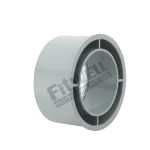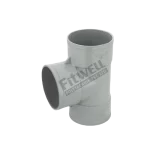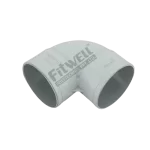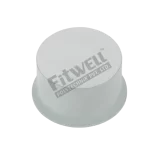The Importance of Quality Fittings in a Plumbing System
Introduction
A plumbing system’s efficiency and reliability largely depend on its components, particularly pipe fittings. While pipes are the backbone of any plumbing system, it is the fittings that ensure the smooth flow of water, gas, or other fluids through intricate pipe networks. Using high-quality fittings is crucial for maintaining a reliable and leak-free plumbing system. This article explores the significance of quality fittings in plumbing, the benefits they provide, and how they contribute to a system’s long-term performance.
What Are Plumbing Fittings and Their Role?
Pipe fittings are essential components used to connect sections of pipe, change direction, and regulate the flow of liquids or gases in a plumbing system. These fittings come in various shapes and sizes, such as elbows, tees, couplings, and reducers, to accommodate different piping needs.
Key Roles of Pipe Fittings:
- Connection: Securely connect pipes to create a continuous flow path.
- Direction: Change the direction of flow within the system (e.g., elbows and tees).
- Flow Control: Regulate the flow and pressure of fluids within the plumbing network.
- Leak Prevention: Ensure tight, leak-proof joints that prevent water loss and system damage.
Given their critical role in the overall functionality of a plumbing system, the quality of these fittings can significantly impact the system’s reliability and lifespan.
Benefits of Using High-Quality Pipe Fittings
Investing in high-quality pipe fittings brings numerous benefits that contribute to a reliable and leak-free plumbing system:
1. Durability
Quality fittings are made from premium materials designed to withstand the demands of various plumbing environments. They resist corrosion, high pressure, and temperature changes, ensuring the system’s long-term durability and reducing the need for frequent repairs or replacements.
2. Leak Prevention
Poor-quality fittings are prone to cracks, warping, and improper sealing, leading to leaks and water damage. High-quality fittings, on the other hand, provide a secure and leak-proof connection, maintaining the integrity of the plumbing system and preventing water loss.
3. Enhanced Performance
By using reliable fittings, you ensure smooth water flow and pressure throughout the plumbing system. Quality fittings are designed to minimize flow restrictions and turbulence, leading to a more efficient system that delivers water or gas effectively.
4. Compatibility
High-quality fittings are engineered to match the dimensions and specifications of standard pipes. This compatibility ensures a proper fit, reducing the risk of misalignment, gaps, or weak points that can compromise the system’s functionality.
5. Safety
In plumbing systems that carry drinking water, chemicals, or gases, safety is paramount. High-quality fittings are manufactured to meet industry standards for health and safety, ensuring that the materials do not contaminate the fluid being transported.
How Quality Fittings Ensure a Leak-Free Plumbing System
A leak-free plumbing system is essential to avoid water wastage, property damage, and costly repairs. Here’s how high-quality fittings help maintain a leak-free system:
1. Precision Engineering
Premium fittings are manufactured with precision to ensure a perfect fit with pipes. This tight fit creates a secure joint that minimizes the risk of leaks. When combined with proper installation techniques, quality fittings provide a durable seal that withstands pressure variations and temperature changes.
2. Corrosion Resistance
Many leaks in plumbing systems are caused by corrosion, especially in metal fittings. High-quality fittings, particularly those made from materials like UPVC or CPVC, are resistant to corrosion. This resistance ensures that the connections remain intact over time, preventing leaks caused by rust or chemical reactions.
3. Stress Tolerance
High-quality fittings are designed to handle the stress exerted by fluid pressure and external forces, such as ground movement or pipe expansion. By absorbing and evenly distributing these stresses, quality fittings reduce the likelihood of cracks or joint failures that could lead to leaks.
4. Proper Sealing Mechanisms
Quality fittings incorporate effective sealing mechanisms, such as O-rings, gaskets, or solvent cement joints, that provide an extra layer of protection against leaks. These mechanisms ensure a water-tight seal, even in high-pressure applications.
Manufacturing Process of CPVC Piping Systems
Signs of Poor-Quality Fittings and Their Consequences
Using subpar fittings can have detrimental effects on the plumbing system. Here are some signs of poor-quality fittings and the potential consequences:
Signs of Poor-Quality Fittings:
- Visible cracks, warping, or deformities in the fittings.
- Loose connections that do not fit securely onto pipes.
- Corrosion or rust on the surface.
- Leaks around the joints shortly after installation.
Consequences:
- Frequent Leaks: Poor-quality fittings are prone to leaks, leading to water loss and potential property damage.
- System Inefficiency: Leaks and improper flow control result in inefficient water or gas delivery, affecting the system’s performance.
- Increased Maintenance Costs: Frequent repairs and replacements of low-quality fittings add to maintenance costs and inconvenience.
How to Choose Reliable Pipe Fittings for Your Plumbing System
Selecting the right fittings is crucial for maintaining a reliable and leak-free plumbing system. Here are some tips for choosing quality pipe fittings:
1. Material Quality
Opt for fittings made from durable materials like UPVC, CPVC, brass, or stainless steel, depending on the application. Ensure that the material is compatible with the type of fluid being transported and the environmental conditions of the installation.
2. Brand Reputation
Choose fittings from reputable manufacturers like Fitwell, known for their precision-engineered products and adherence to industry standards. Fitwell fittings are renowned for their quality, durability, and reliability, making them a preferred choice among professionals.
3. Certifications
Look for fittings that carry certifications indicating compliance with industry standards, such as ISO, ASTM, or NSF. These certifications serve as trust signals that the fittings have undergone rigorous testing for safety and performance.
4. Proper Sizing
Ensure the fittings are designed to match the pipe sizes in your plumbing system. A precise fit is essential for creating a secure, leak-proof joint that maintains system efficiency.
Why Fitwell Pipe Fittings Stand Out in Quality and Reliability
Fitwell pipe fittings have earned a reputation for quality and reliability in the plumbing industry. Here’s why Fitwell is a go-to choice for professionals and homeowners alike:
- Precision Engineering: Fitwell fittings are manufactured with high precision to ensure a perfect fit and leak-proof connection, contributing to a reliable plumbing system.
- Durable Materials: Made from high-grade materials like UPVC and CPVC, Fitwell fittings offer resistance to corrosion, pressure, and temperature variations, ensuring long-lasting performance.
- Variety and Versatility: Fitwell offers a wide range of fittings, including elbows, tees, couplings, and valves, to suit different plumbing needs and applications.
- Industry Compliance: Fitwell fittings meet stringent industry standards, providing assurance of their safety, quality, and effectiveness in maintaining a leak-free system.
Comparing CPVC Pipes to UPVC Pipes
While both CPVC and UPVC pipes are commonly used in plumbing, they have distinct differences that make CPVC the superior choice for certain applications:
1. Temperature Resistance
- CPVC Pipes: Can handle hot water applications, withstanding temperatures up to 200°F (93°C) without warping or degrading.
- UPVC Pipes: Suitable primarily for cold water supply, as they cannot handle high temperatures effectively.
2. Chemical Resistance
Both CPVC and UPVC pipes are resistant to corrosion and chemicals, but CPVC has a higher resistance to a broader range of chemicals, making it suitable for industrial and chemical transport applications.
3. Cost
- UPVC Pipes: Generally have a lower initial cost compared to CPVC pipes.
- CPVC Pipes: Offer long-term savings due to their durability, lower maintenance requirements, and suitability for both hot and cold water applications.
Conclusion
The importance of using high-quality pipe fittings in a plumbing system cannot be overstated. Quality fittings ensure durability, leak prevention, and efficient performance, contributing to a reliable and long-lasting plumbing setup. By investing in reputable fittings, like those from Fitwell, you can avoid common issues such as leaks, corrosion, and inefficient flow, ultimately saving time and money on repairs and maintenance.
Stay on the forefront of industry trends by checking out our latest content
Stay ahead with our latest content, designed to keep you informed on the newest industry trends and insights. Discover valuable updates that help you lead in your field.

Agricultural Irrigation Pipes: Types & Benefits
Agricultural Irrigation Pipes: Types & Benefits Introduction Irrigation systems are a vital component of agricultural operations across the globe. The choice of pipes, their maintenance, and overall management can significantly

UPVC vs PVC Pipes: Key Differences & Uses
UPVC vs PVC Pipes: Key Differences & Uses Can UPVC Pipe Be Used Instead of PVC Pipe in Borewell? What is the Difference Between UPVC and PVC Pipes? UPVC (Unplasticized

The Ultimate Guide to UPVC Pipes and Fittings for Home and Industrial Use
The Ultimate Guide to UPVC Pipes and Fittings for Home and Industrial Use Introduction UPVC (Unplasticized Polyvinyl Chloride) pipes have become increasingly popular in the plumbing industry due to their
Request a Free Consultation
Get personalized plumbing solutions with a free consultation from Fitwell.

